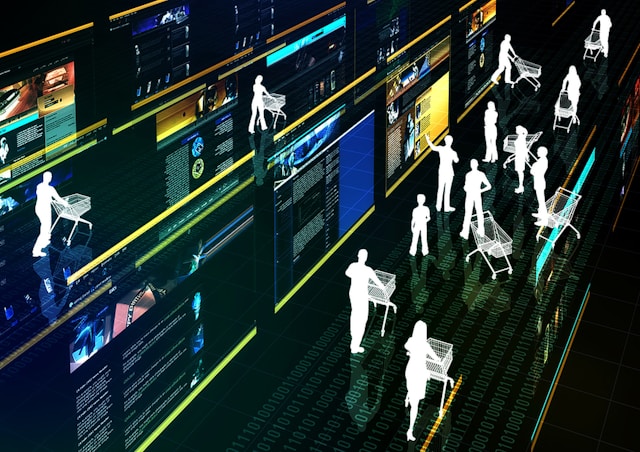Introduction: A Rapidly Shifting Digital Horizon
In today’s tech-driven world, we are witnessing a digital revolution unlike any other. Emerging technologies such as artificial intelligence (AI), blockchain, quantum computing, and the Internet of Things (IoT) are not just reshaping industries—they’re redefining how we live, work, and interact. But alongside these innovations comes a vital and growing concern: cybersecurity.
As digital systems grow more complex, so too do the threats targeting them. Cybersecurity is no longer a backroom IT issue; it is now a cornerstone of strategic planning for businesses, governments, and individuals alike. The convergence of new tech and security challenges opens a critical dialogue about how prepared we are for this evolving landscape.
Artificial Intelligence: Boon or Breach?
Artificial intelligence is transforming nearly every industry. From automating customer service to detecting diseases and managing supply chains, AI is a powerful force for efficiency and innovation. However, it also introduces new vectors for cyber attacks. Malicious actors are using AI to develop more sophisticated phishing scams, deepfakes, and automated hacking tools.
Conversely, AI can also strengthen cybersecurity. It helps monitor networks in real-time, detects anomalies quickly, and predicts potential vulnerabilities. The dual nature of AI—as both a tool and a threat—means that cybersecurity strategies must evolve in tandem with technological advancement.
Blockchain Technology: Decentralized but Not Invulnerable
Blockchain is often heralded as a security game-changer due to its decentralized nature and immutability. It’s increasingly used in finance, supply chains, and even voting systems. While it offers enhanced transparency and reduces the risk of centralized attacks, blockchain is not foolproof.
Hackers have found ways to exploit smart contract vulnerabilities, conduct 51% attacks, and even compromise user wallets through phishing and social engineering. As blockchain continues to integrate into critical systems, developing robust cybersecurity protocols around it is essential.
Quantum Computing: A Security Paradigm Shift
Quantum computing promises to solve problems that are currently computationally impossible. While this could revolutionize fields like medicine, climate modeling, and logistics, it also poses a significant threat to current encryption standards.
Most modern encryption relies on the time it takes classical computers to crack complex algorithms. Quantum computers could potentially break these codes in seconds, rendering current cybersecurity measures obsolete. Preparing for the quantum future involves developing quantum-resistant encryption and international cooperation on secure computing protocols.
The Internet of Things (IoT): A Web of Vulnerabilities
IoT devices—from smart thermostats to industrial sensors—are exploding in number. While they offer unprecedented convenience and data collection capabilities, they also broaden the attack surface for cybercriminals.
Many IoT devices have minimal security features and lack consistent updates, making them prime targets. A compromised smart device can serve as a gateway into a larger network, leading to data breaches or even physical security threats. Cybersecurity must be baked into the design and lifecycle of every IoT product.
5G Connectivity: Speed Comes with Security Trade-Offs
The rollout of 5G networks promises faster data transmission and greater connectivity. This technological leap supports innovations like autonomous vehicles, telemedicine, and smart cities. However, increased speed and bandwidth also mean more potential entry points for cyber threats.
The decentralized nature of 5G architecture makes traditional security models less effective. Network slicing, which allows multiple virtual networks to operate on the same physical infrastructure, introduces additional complexity. To address these issues, cybersecurity measures must be embedded directly into 5G infrastructure.
Cybersecurity in a Post-Pandemic World
The COVID-19 pandemic accelerated digital transformation across sectors. Remote work, online education, and digital health services became the norm. Unfortunately, this rapid shift also led to a surge in cyberattacks targeting vulnerable systems.
Phishing scams, ransomware attacks, and data breaches have become more common. As we move forward, cybersecurity must be a foundational component of any digital initiative. Regular audits, employee training, and zero-trust security models are becoming standard practice.
The Role of Regulation and International Cooperation
As cyber threats become more sophisticated, national and international regulations are evolving to keep pace. The General Data Protection Regulation (GDPR) in Europe and similar laws worldwide aim to protect user data and hold organizations accountable.

However, cybercrime is a global issue that requires global solutions. Cross-border cooperation among governments, businesses, and cybersecurity experts is vital. Information sharing, joint task forces, and standardized protocols can help create a unified defense against cyber threats.
Future-Proofing Through Education and Awareness
Ultimately, the most advanced cybersecurity systems are only as strong as the people who use them. Cyber hygiene and awareness are critical in defending against attacks. This includes everything from recognizing phishing emails to understanding the importance of software updates.
Investing in cybersecurity education—from primary school to the workplace—is essential. The next generation of workers must be equipped not only with technical skills but also with a strong understanding of digital ethics and online safety.
Conclusion: Embracing Innovation with Vigilance
Emerging technologies hold incredible promise for solving global challenges and improving our daily lives. However, as we welcome these innovations, we must also remain vigilant. Cybersecurity is not a barrier to progress—it is a critical enabler.
By integrating robust security measures into the fabric of emerging tech, we can build a digital future that is not only intelligent and efficient but also safe and resilient. The journey forward is one of balance: embracing the new while protecting what matters most.
\

